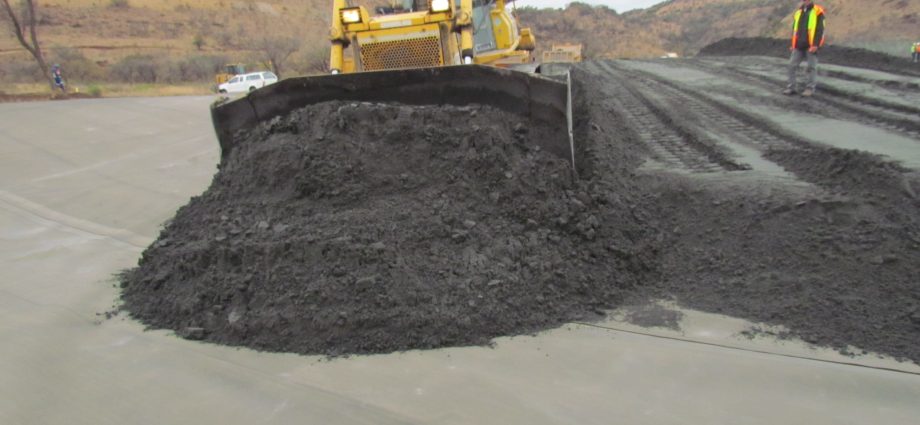New tailings standards place considerable onus on mining companies to ensure adequate financial provisioning for the closure of their tailings storage facilities (TSFs) – notably for future costs that these TSFs will incur after closure or may incur in the case of failure.
The Global Industry Standard for Tailings Management (GISTM) points to the need for TSF owners to regularly – and publicly – update their planned cost of closure and reclamation. Should the owner consider selling the mine, they also need to consider any prospective purchaser’s ability to maintain the GISTM standard in this regard.
James Dutchman, principal engineering geologist at SRK Consulting South Africa (SA), said that mining companies can begin proactively addressing their financial provision at an early stage, by optimising the TSF design to meet closure requirements as effectively and economically as possible.

Multidisciplinary guidance
“This means integrating the input of various professional disciplines to ensure that structural and infrastructure risk are considered alongside the TSF’s environmental and social impact,” said Dutchman. “In many cases, there is a trade-off between investing more upfront for an optimal design that will require less operating expenditure in future, or moderating capital expenditure in the knowledge that more will be required to provision for the future.”
The detailed and regularly updated knowledge base that is highlighted as a requirement by the GISTM remains a vital basis of provisioning for the future. This becomes particularly clear when considering the risk of TSF failure and the cost of emergency response and long-term recovery from catastrophic failure – covered in principle 13 and 14 of the GISTM. According to SRK Consulting SA principal consultant Lisl Pullinger, this highlights the need for extensive social and environmental data relating to the TSF’s inundation zone.

Understanding impacts of failure
“Data on the people, livelihoods, private structures and public infrastructure in the inundation zone, for instance, will be an important pillar for understanding the potential costs of recovering from a failure event,” said Pullinger. “Similarly, a detailed environmental baseline will also be required to guide the costing of rehabilitation of the natural landscape after a failure.”
Specialised skills in various disciplines are required to then quantify the likely replacement costs of damage to property – which would of course vary from country to country – whether this relates to homes and churches or agricultural lands and other environmental assets. She said that this would guide the development of a financial model that would allow mining companies to progress toward a financial quantum.
“To strengthen the integrity of the financial model and the financial provisioning that follows, companies will usually require that an independent agency is involved, who does not have a stake in the outcome of resulting decisions,” she said.
Indirect impacts
In addition to the environmental and social costs incurred by a TSF failure, there are likely to be business interruption costs that are best understood by production experts and financial planners. SRK Consulting SA principal scientist Herman Booysen pointed to indirect damage such a loss of trading opportunities for local businesses or travel detours experienced by communities.

“The financial provision for a disaster will need to include the monetary value of the many disruptions to normal daily life in the inundation zone,” said Booysen. “One approach to the mitigation options is to consider the respective costs and benefits – comparing the cost of the mitigation measure with the damage being prevented over time.”
Cost of compliance vs failure
The aftermath of the Brumadinho tailings disaster in 2019 led to reparations of almost US$7 billion [PC1] being agreed in 2021, to cover regulatory fines, damages and long-term remediation costs. Kavandren Moodley, principal environmental scientist at SRK Consulting SA, pointed out that this is a sober reminder of the cost of failure – which has to be weighed up against the cost of compliance.
“Mining companies routinely allocate a portion of their operating budget to compliance, and it is a normal cost of doing business responsibly,” said Moodley. “Incorporating GISTM parameters into TSF design from the outset – from site selection studies to engineering and environment, social and governance (ESG) considerations – will invariably be more economical that trying to retrofit solutions at an advanced stage.”
Knowledge base
One of the more difficult impacts to quantify are the cultural heritage aspects within the inundation zone, according to SRK Consulting SA partner and principal environmental scientist Fran Lake. However, the required updating of the knowledge base allows mines to plan for adequate mitigation measures.
“The GISTM requires mines to update the knowledge base with any material changes that occur relating to the TSF,” said Lake. “As more people migrate towards the mine and establish communities, these settlements might fall within the inundation zone – which would require proactive measures to be considered.”
Uncertain climate
Climate change adds a further level of uncertainty to the planning, construction and management of TSFs, explained Philippa Burmeister, partner and principal scientist in air quality and climate change at SRK Consulting SA. Changing weather patterns, especially rainfall variability, make it more difficult to predict the conditions that TSF design will have to deal with in decades and centuries to come.
“The only practical solution is to conduct the design being mindful that adaptations and expansions are going to be required in the future,” said Burmeister. “For instance, if we can see a likely trend towards the incidence of extreme rainfall events, then infrastructure like return water dams and pollution control dams will need to be larger.”

However, she noted that the GISTM does not require that this construction be done immediately for conditions in, say, 20 years’ time. The focus should rather be on designing for flexibility, and on close monitoring of trends so that effective responses can be planned accordingly. These continuous adaptations would need to be provided for in financial planning, paving the way to responsible TSF closure and ensuring that the facility remains safe in its post-closure phase.
Once again, a regularly updated knowledge base emphasised in the GISTM remains the critical platform for decision-making and guides the way to realistic financial provisioning.















